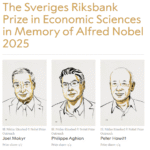Third Generation World Wide Web (WWW): Basics Explained

Web 3.0 is the next evolution of the World Wide Web. The first generation, referred to as Web 1.0, was invented in 1989 by Tim Berners-Lee.
In Web 1.0 and 2.0, Hyper Text Markup Language(HTML) defined the layout and delivery of webpages. It will continue to be foundational in Web 3.0, but how it connects to data sources and where those data sources reside will probably be different.
Web 3.0 will thus be more “intelligent” and responsive because data will be more logically organized in the Semantic Web structure- The Semantic Web is a vision for linking data across webpages, applications and files.
Web 3.0 is the next version of the web and its proponents claim that the internet will be much smarter, because artificial intelligence will be ubiquitous.
Its user interface will provide access to documents, applications and multimedia on the internet with strong emphasis on decentralized applications and probably make extensive use of blockchain-based technologies. It will also use machine learning and Artificial Learning to empower a more intelligent and adaptive web.
- All the world’s data will be unified in a so-called Semantic Web-The Semantic Web is a vision for linking data across webpages, applications and files.
- people exchange digital currencies and records without intermediaries. Web 3.0’s global peer-to-peer network could be the great leveler -Individuals will have more control over web content and who can access and profit from their personal data.
- it could fundamentally alter how people interact on the web and how companies make money from goods and services.
- Businesses could more easily monitor their supply chains by using decentralized apps to break down data silos and see suppliers’ activities. Sharing real-time information among supply chain participants could reduce shortages and speed up deliveries.
There is a pervasive notion that the third-generation web is biased towards the gaming and cryptocurrency industry. However, a 2021 report by the U.S.- India Strategic Partnership Forum states that the third-gen web will be crucial for India to realise its $1.1 trillion digital asset opportunity by 2032.
Many websites and nearly all applications on Web 2.0 rely on some form of centralized database to deliver data and enable functions in applications. On Web 3.0, applications will instead use a decentralized blockchain that lacks an arbitrary central authority. In theory, this more democratic way of creating and affirming information will give users more control over the web and how their personal data is used.
Another difference between Web 2.0 and 3.0 is that Web 3.0 will give AI and machine learning more prominent roles in delivering relevant content to each user, instead of content others have chosen to provide. While Web 2.0 essentially enables users to contribute to and sometimes collaborate on site content, Web 3.0 will most likely turn these jobs over to the Semantic Web and AI.
DRAWBACKS
Complexity. Decentralized networks and smart contracts pose significant learning curves and management challenges for IT, not to mention everyday web users.
Security. The complexity of these foundational technologies makes Web 3.0 security a real challenge. Smart contracts have been hacked, and security incidents on blockchains and cryptocurrency exchanges make national news.
Regulatory concerns. The lack of a central authority means the regulatory and compliance regimes that help keep online commerce and other web activities safe for users are ineffective or nonexistent.
Technical requirements. Blockchains and dApps are often resource intensive and require expensive hardware upgrades, in addition to the environmental and monetary costs of their energy use.
READ: https://www.techtarget.com/whatis/definition/Web-30
Artificial intelligence (AI) is an area of computer science that emphasizes the creation of intelligent machines that work and react like humans. It aims to improve machine behavior in tackling complex tasks.Some of the activities computers with artificial intelligence are
designed for include:
Speech recognition
Learning
Planning
Problem solving
The blockchain is an incorruptible digitized, decentralised distributed ledger of economic transactions that can be programmed to record in chronological order not just financial transactions but virtually everything of value, collectively maintained by a network of computers, called nodes.





0 Comments